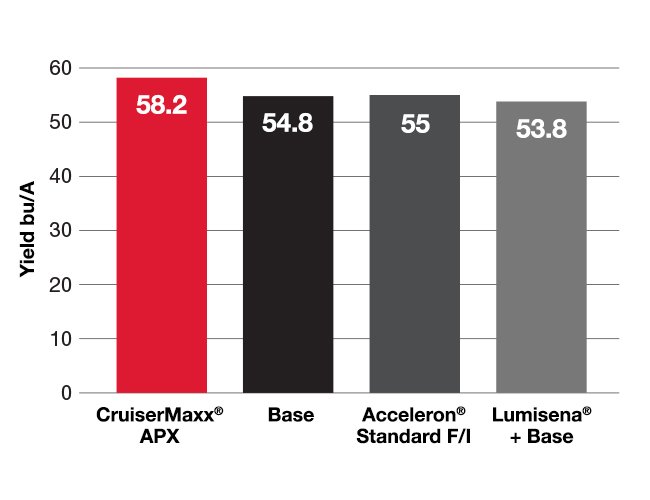We’ve seen how severe drought conditions can unexpectedly appear and put soybean yields at risk. Drought stress can have several adverse effects on your soybeans, including reduced nutrient availability, leaf roll up and stunted root growth.
Even under drought conditions, disease management is key to retaining your bottom line. A well-timed fungicide application with added plant-health benefits can help protect your yield all the way to harvest.
1. Fungicides help keep plants greener, longer by improving light absorption rates.
With drought stress comes slower photosynthesis. This can lead to reduced plant size, decreased standability and lower nutrient levels. In this case, a fungicide can improve plant health by maintaining the leaves’ capacity for light absorption.
2. Fungicides can help crops in stressful dry conditions by improving water-use efficiency.
Fungicides can help to lower transpiration rates in leaves while maintaining photosynthesis — helping plants withstand drought stress conditions longer — while continuing to pack on potential yield.
3. Fungicides help increase harvest efficiency, by improving crop health and reducing pod shattering.
Improved water-use efficiency can also help improve pod fill and prevent plants from dying prematurely and pod shattering, which can help you have a more profitable and efficient harvest.
With a plant health fungicide application, you can rest assured that your soybeans are protected from disease and the effects of drought stress. For long-lasting control plus superior plant-health benefits, we recommend a preventive application of Miravis® Neo fungicide so you can see more green in your fields, on your yield monitor and in your wallet.
Miravis Neo is powered by ADEPIDYN® technology — one of the highest-performing SDHI modes of action available — which directly impacts your plant’s ability to transpire and retain moisture, thereby protecting your yield potential from the effects of disease and drought stress.
When you combine higher potential yield and greater harvest efficiency you also gain greater time and fuel efficiency, meaning a lower cost per bushel per acre and a better deal at harvest.

Ready to see more green with your fungicide? See how Miravis Neo performed near you and explore local soybean trial results.








